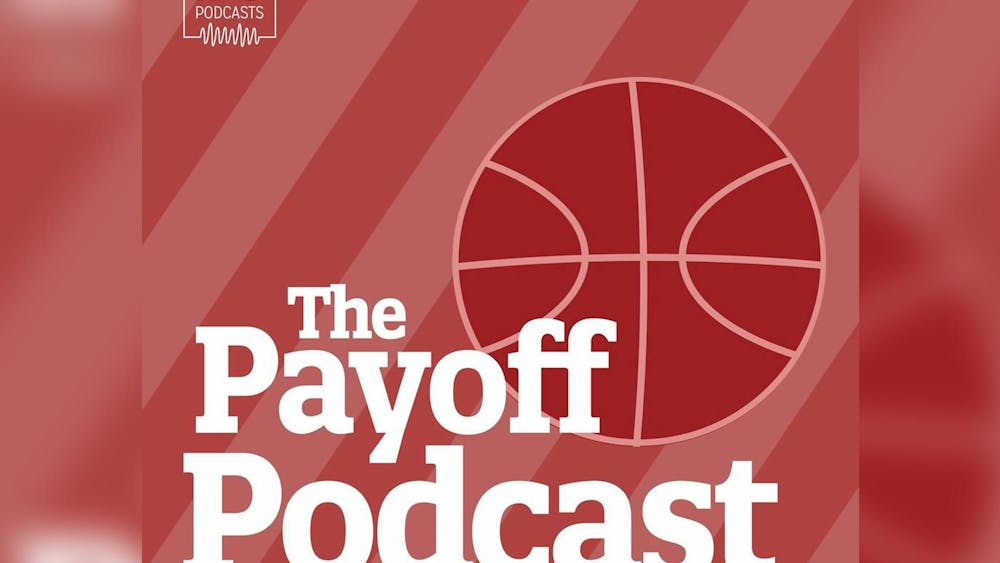College basketball has always been the ultimate chaos sport. And the season finale takes shape through March Madness, an annual circus that sees upsets and pandemonium sweep the nation.
The 68-team single elimination tournament format shows that the best team doesn’t always win. However, the entertainment factor of the sport being so unpredictable is what makes the three week tournament electric.
But in the 2019-20 season we have seen a whole new level of equality in college basketball. There has never been more than seven different teams ranked No. 1 in the AP poll in a single season. By New Year’s, five different squads had already held the top spot in the county.
There have been four games this season where a team, per analytics expert Ken Pomeroy, lost a game that it had at least a 99 percent chance of winning. Two of those games — University of Evansville beating then-No. 1 University of Kentucky and Stephen F. Austin University defeated then-No. 1 Duke University — provided two of the five biggest point spread upsets in the last 15 years of college hoops.
The Duke loss was especially crazy, as it ended Duke's 150 game nonconference home game winning streak. It was also the first time the Blue Devils lost to a non-power conference team at home since 1983.
Another example of craziness began Jan. 2, when Michigan State beat Illinois by 20 points. Three days later, Illinois blasted Purdue 63-37 in Champaign, Illinois. On Sunday, No. 8 MSU traveled to Purdue. Naturally, the Boilermakers dismantled the Spartans by 29 points.
Big Ten teams own an incredible 32-5 record against other Big Ten teams at home. That would lead to the argument of, it’s hard to win on the road in college basketball. But on the opposite end of the spectrum, ACC home teams have an abysmal 15-22 record against in-league foes.
We can argue back and forth whether this level of parity and unpredictability is good for the sport, and there’s good arguments on each side of that topic. But let's focus on the main cause for the chaos: an uncomfortable lack of talent within college basketball.
College basketball sees ebbs and flows in its talent level on an annual basis. That’s just what happens when the sport sees this much player turnover every year. In the one-and-done era, a big indicator for how much talent there is in NCAA basketball is how good the freshman class is.
Some years that leads to really good classes. A prime example was the 2018-19 season, with Zion Williamson, RJ Barrett, Colby White, Tyler Herro and even Romeo Langford leading what was one of the most talent-packed seasons college basketball has seen in recent memory.
The 2017-18 season was similar as Trae Young, Marvin Bagley III, DeAndre Ayton, Colin Sexton and others dominated the landscape. But not every season has such a great incoming class. Other campaigns that saw subpar freshman classes include the 2012-13 and 2015-16 seasons. Both are great comparisons to the talent level of the 2019-20 freshman class.
So why does this campaign have less talent than other seasons with not-so-stellar freshman classes? The main culprit is an increased talent drain that has seen more and more good college players terminate their eligibility early in order to play professionally.
In 2010, 51 college players declared early for the NBA Draft. In 2015, there were 47 players that left college early for the draft such as Karl-Anthony Towns and D'Angelo Russell. However, since that point, the amount of early entrants has significantly grown — a whopping 86 players exited their schools with eligibility remaining to enter the 2019 draft.
That has left college basketball without a significant amount of returning talent. For the first time in the 66-year history of the ACC, the conference saw 13 of the 15 All-ACC player members leave school early, with only third team members Jordan Nwora and John Mooney returning.
The lack of retention combined with the subpar recruiting class has caused an all-time low in college basketball talent. And this trend is likely to continue. Players — rightfully — want to leave early to be able to make money by playing professionally.
NBA-caliber players bypassing college altogether will also likely become more popular, whether it be the routes that LaMelo Ball, RJ Hampton and James Wiseman took this season or by being able to jump straight to the NBA with the eventual end of the one-and-done rule.
So get used to the chaos, because more likely than not, NCAA basketball is going to see a lot more of it moving forward.
As CBS analyst Jon Rothstien often tweets, “Anarchy? Nope. Just College Basketball.”






